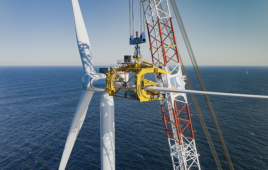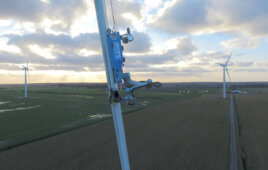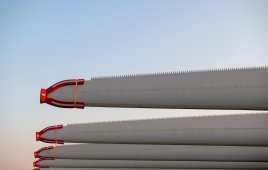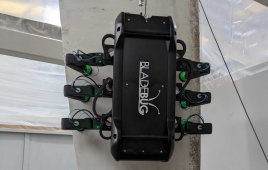Xiao Chen / Researcher / DTU Wind Energy
Introduction

Interactive aspects affecting rotor blade failure [A color figure can be viewed at wileyonlinelibrary.com]
Based on the report, blades are found to be susceptible to a number of different failures caused by one or a combination of the following:
- Failure of a control system to detect vibration, imbalance, or insufficient power • Failure at root connection leading to blade throw (entire blade becomes separated from the hub at the metal to metal root joint)
- Extreme load buckling
- Lightning damages, including subsurface effect and moisture ingression, thereafter Received: 19 December 2017 Revised: 18 March 2018 Accepted: 7 May 2018 DOI: 10.1002/we.2212 Wind Energy. 2018;1–18. wileyonlinelibrary.com/journal/we Copyright © 2018 John Wiley & Sons, Ltd. 1
- Manufacturing defects leading to debonding (deterioration of the bonding agents used at the interface between the various structural elements of a blade)
- Blade overspeed striking the tower
- Environmental events, including natural perils, outside design envelops • Incorrect design for fatigue loads
- Crane impact during scheduled maintenance or on‐site repair
- Poor manufacturing quality control/assurance leading to delamination (air traps between the piles of a blade or poor infusion of resin in a given area that causes poor or no bonding)
- Nacelle fire spreading to blades
- Human error (making an unauthorized adjustment during construction/maintenance)
Among all types of blade failures, catastrophic structural failures can cause significant economic loss and incur negative social impact. Invaluable lessons can be learned from these failures if a detailed technical investigation is performed and documented, allowing the improvement of knowledge regarding the structural failure in the field and in turn the improvement of design methods, manufacturing techniques, operation, and maintenance strategies of rotor blades.
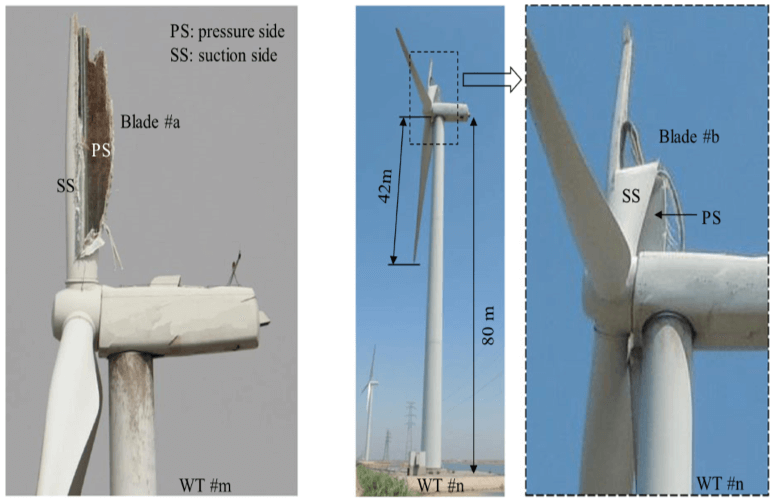
Overview of structural failure of both wind turbine blades. [A color figure can be viewed at wileyonlinelibrary.com.]
Most public studies regarding structural failure of rotor blades so far have been conducted in laboratories with well‐known blade information and under well‐controlled test conditions. Failure modes and mechanisms leading to structural collapse have been investigated extensively. To understand the real‐world blade failure, despite considerable difficulties in collecting reliable data and reconstructing failure accidents, some studies have managed to investigate the structural failure of rotor blades under extreme wind conditions. Useful information has been shared within wind energy community, which includes root causes of blade failure and recommendations for possible improvement of blade design and controlling strategies to reduce the risk of failure. Indeed, it is challenging for wind turbine blades to survive extreme wind conditions such as typhoons and hurricanes which only exist in a few regions and with a low probability of occurrence. Under such circumstances, structural failures of rotor blades appear to be inevitable and sometimes even acceptable in order to prevent turbine towers from more catastrophic collapse.
Nevertheless, there are still many cases when rotor blades fail during their normal operation when they are expected to be structurally safe due to a presumably large safety margin. As these unanticipated failures can be caused by manufacturing‐induced defects and incur considerable downtimes and repair cost, extensive studies have been carried out to characterize different defects and to examine the effects of defects in composite materials at a coupon level.
Although considerable understanding on manufacturing‐induced defects has been achieved based on relatively thin laminates in laboratory conditions, it is still not clear whether the results are directly applicable to large composite rotor blades typically with thick laminates at a full‐scale structural level mainly due to the scalability of manufacturing techniques. It is of particular interest to blade designers and manufacturers to understand how and why a real rotor blade withas‐manufacturing defects, rather than those introduced artificially in laboratories, fails in the normal operations. With this invaluable information, many opportunities can be created towards a higher level of structural integrity. For example, new types of defects could be identified and studied, material tests could be designed to include more realistic defects, manufacturing processes could be improved to reduce the defects, structural performance could be verified taking into account the effects of defects as early as in the design stage.
Despite the need to understand the structural failure of blades in normal operation, to the author’s best knowledge, there is no public study so far carried out to investigate this issue from a detailed structural perspective. The essential motivation of this work is to provide a better understanding on how and why rotor blades fail in the field during their normal operation through a case study on structural failure of two blades in a wind farm. The case study provides details that would not normally be easily obtained by others and helps researchers produce novel hypotheses that can be examined in further study. In this study, both fractured blades under investigation have the same design, manufacturing, service conditions, and even similar service lives before they failed in the field. Moreover, the failure locations and failure modes are very similar in these 2 blades. It can be said that the failure phenomena have been well reproduced in the real world, making this case not only informative but also representative to other similar cases.
In general, conducting a failure investigation on rotor blades that have failed on‐site is rather challenging. On one hand, high‐quality data and reliable information have to be collected, verified, and analyzed before rational conclusions can be made. On the other hand, materials, manufacturing processes, structural design, and loads are highly interactive as shown in Figure 1, and all these aspects have to be taken into account in the investigation.
In this study, the operational status of the wind turbines during the failure accidents is known taking advantage of the supervisory control and data acquisition (SCADA) data, enabling not only turbine reactions to the critical structural failure to be known but also the loading conditions of the blades to be deduced. Subsequently, a comprehensive post‐mortem investigation is carried out on the fractured blades using a multi‐level approach to identify the underlying mechanisms of failure.
For the rest of Mr. Xiao Chen’s paper: https://onlinelibrary.wiley.com/doi/abs/10.1002/we.2212
Filed Under: Blades, News, O&M

